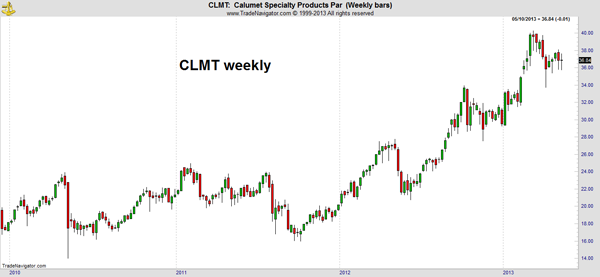If I Could Buy Only Two High-Yield Stocks, These Would Be Them
For income investors, the problems continue to mount. Most recently, the yields available on junk bonds broke to record lows. Barclays U.S. High Yield Index fell below 5%. At this level, there seems to be little protection against default risks for investors.
Interest rates are the payments investors receive for lending money. Rates should include both protection against inflation and compensation to investors for accepting the risk that the borrower may not be able to repay the loan. Inflation is reported to be less than 2%, a level income investors are unable to beat with many of their options. Ten-year Treasury notes, for example, are paying an interest rate that is below the rate of inflation. Unless inflation drops, investors in Treasurys will suffer real losses on their investment.
With junk bonds yielding 5%, investors are only getting a return of about 3% after inflation. If issuers default, junk bond investors could lose money. Default rates are at historic lows with only 2.6% of junk bonds defaulting in the fourth quarter of 2012, the latest available data. This is significantly below the historical average of 4.8% from data going back to 1983. Yet, the default rate is up since 2011, indicating risk in the market has increased.
High-yield bonds are now high-risk investments. Income investors can earn better returns with lower risk in dividend-paying stocks.
I developed a trading system to find the best stocks to buy among any group of stocks. I consider the best stocks to be the ones most likely to beat the S&P 500 over the next 6-12 months. This system uses relative strength (RS) of price and RS of cash flow changes to identify the best stocks.
RS of price has been widely studied by the academic community and is consistently found to identify stocks that outperform the broad market average. RS strategies, on their own, can be volatile and suffer large losses in bear markets. Over time, the outperformance in bull markets offsets the losses in bear markets, but I prefer to avoid large losses.
Buying high RS stocks only if the company is attractively priced on a fundamental basis is one way to decrease risk. For example, buying stocks with low price-to-earnings (P/E) ratios and high RS could outperform the stock market averages with less risk.
But in studying the markets, I found that applying RS to cash flow is the best fundamental measure for stocks. Cash flow is subjected to fewer accounting assumptions than earnings and is a more reliable indicator. Applying RS calculations to cash flow finds companies with improving cash flows and delivers impressive performance over time.
I tested the system rules against a group of stocks that have a history of dividend increases. Since 2006, following the system rules would have delivered a gain of 29.8% a year while the S&P 500 gained an average of 4.9%. Risk was reduced by more than half when following the system rules.
Right now, the system points to Calumet Specialty Products Partners LP (CLMT) and Kohlberg Kravis Roberts & Co. (KKR) as "buys."
CLMT is a producer of specialty hydrocarbon products in North America. The stock offers a dividend yield of 7.4% with payments expected to total $2.72 in the next year. CLMT has grown its dividend steadily since 2010. About two-thirds of the company's earnings are needed to preserve the dividend, and that offers room to grow payouts.

KKR is a private equity firm that has been expanding its offerings to mutual funds. This allows the firm to earn fees from a larger base of investors, assuming that KKR continues to deliver outstanding investment results.
The company is expected to pay a dividend of $1.08 over the next year, offering a yield of 5.1%. Dividend payments account for less than 60% of the company's earnings and are well covered by cash flow.

Action to take: Consider CLMT and KKR for high income. In addition to offering reliable income streams, these dividend stocks offer potential capital gains.
Related Articles
Chart Says This Hard-Rallying Stock is Ripe for a Sell-off
This High-Flying Stock is Set to Take a Double-Digit Plunge -- Sell Now
The Stock That May Have Saved Angelina Jolie's Life Could Get Another Boost

